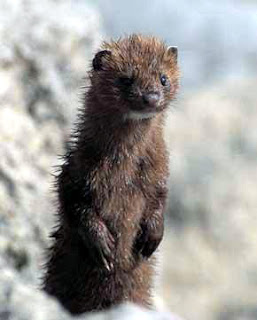TTAB Affirms 2(a) Deceptiveness Refusal of "MINK BIKINI" for Minkless Clothing
Despite Applicant Closet Clothing Co.'s amendment excluding bikini swimwear and clothing made of mink from its application, the Board found the mark MINK BIKINI to be deceptive for various articles of outerwear, and it affirmed that PTO's 2(a) refusal to register the mark on the Supplemental Register. In re Closet Clothing Co. Limited, Serial No. 76623748 (March 5, 2008) [not precedential].

The Board applied its three-part 2(a) deceptiveness test: (1) is the term misdescriptive of the character, quality, function, composition, or use of the goods?; (2) are prospective purchasers likely to believe that the misdescription actually describes the goods?; and (3) is the misdescription likely to affect the decision to purchase?
The Board found no doubt that MINK BIKINI is misdescriptive of the goods. Moreover, Applicant's exclusion of "biking swimwear, bikini underwear, and all other types of bikini clothing and all clothing make of mink" did not avoid the deceptiveness refusal.
Applicant argued that customers "could not possibly mistake something like silk (which some of its goods are made of) for mink." However, Applicant "has not excluded articles made of other types of fur, or even fake fur, which could be mistaken for mink." Of course, consumers would not likely know that Applicant had excluded mink or bikinis from its trademark registration.
Turning to the second question, the evidence indicated that the customers for Applicant's goods (ordinary items of women's clothing) would believe that MINK BIKINI describes the goods -- i.e., that the goods contain mink. Applicant's arguments regarding the sophistication of its customers was unavailing, since its identification of goods contained no restrictions as to channels of trade or classes of purchasers.
As to the third issue, the Board found that mink is "perceived by prospective purchasers as a luxury and high-quality item that imbues the owner with status and would materially affect the purchasing decision."

Applicant imaginatively but futilely contended that Examining Attorney Ingrid Eulin disregarded "why the mark works." According to Applicant, the misdescriptiveness of the mark comes from the phrase MINK BIKINI, not just the word "mink" in isolation:
"[J]oining the words 'MINK' and "BIKINI' to create a trademark for the relevant goods results in a mark so highly misdescriptive -- in fact, so ironic -- that the prospective purchasers are simply not likely to believe that the mark actually describes the goods or to be influenced by the misdescription."
The Board, however, pointed out that the entire mark need not be deceptive in order to support a 2(a) deceptiveness refusal. Furthermore, the Board did not find any "irony" or incongruity in MINK BIKINI such that purchasers would not believe the misdescription. Bikinis made of mink are available and have been "exposed to the public through celebrities and well-distributed fashion photographs."
The Board concluded that the mark is deceptive, and it affirmed the refusal to register under Section 2(a).
TTABlog comment: Would a customer looking at a jacket bearing the brand name MINK BIKINI think that the fur on the collar of the jacket was mink? I think that's quite possible, and I think the Board got this one right. Why would the jacket purchaser know that bikinis were not sold under the mark, nor were any mink-containing goods.? Why wouldn't the customer think that the MINK BIKINI brand owner also sold mink bikinis and other mink clothing items, and that the fur on the jacket was also mink?
Suppose the mark at issue comprised the words BIKINI MINK accompanied by a design showing a mink (the animal) romping in the Marshall Islands? Would that matter atoll? Perhaps.
Seriously, though, compare this case to the Board's recent MINK decision (blogged here) in which that mark was found to be both deceptive under Section 2(a) and deceptively misdescriptive under Section 2(e)(1). Why did MINK BIKINI face only the 2(a) refusal? The answer lies in the fact that the instant Applicant was seeking a Supplemental Registration, and a mark refused under Section 2(e)(1) is still eligible for registration on the Principal Register under Section 2(f). A deceptive mark is not eligible for registration at all (or atoll).
Text Copyright John L. Welch 2008.




0 Comments:
Post a Comment
<< Home